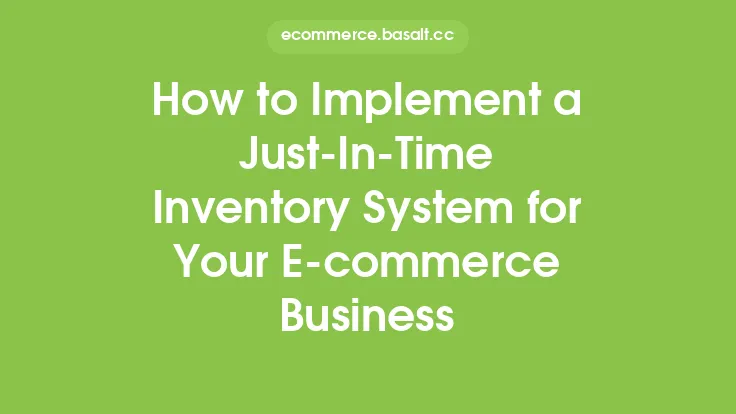In today's fast-paced and competitive e-commerce landscape, having a resilient supply chain is crucial for the success of online businesses. A well-designed supply chain can help companies navigate the complexities of global trade, mitigate risks, and ensure timely delivery of products to customers. Building a resilient supply chain requires careful planning, strategic decision-making, and a deep understanding of the intricacies involved. In this article, we will delve into the key aspects of building a resilient supply chain for your online business, exploring the essential components, strategies, and best practices that can help you achieve long-term success.
Understanding the Components of a Resilient Supply Chain
A resilient supply chain consists of several interconnected components, each playing a vital role in ensuring the smooth operation of the entire system. These components include suppliers, manufacturers, logistics providers, warehouses, and distribution centers. To build a resilient supply chain, it is essential to carefully evaluate and select each of these components, considering factors such as quality, reliability, cost, and geographical location. For instance, suppliers should be chosen based on their ability to provide high-quality materials, adhere to delivery schedules, and respond to changes in demand. Similarly, logistics providers should be selected based on their expertise, infrastructure, and ability to handle varying volumes of shipments.
Developing a Supply Chain Strategy
A well-defined supply chain strategy is critical to building a resilient supply chain. This strategy should align with the overall business goals and objectives, taking into account factors such as market trends, customer expectations, and competitive pressures. A good supply chain strategy should also be flexible and adaptable, allowing for adjustments to be made in response to changes in the market or unexpected disruptions. Some key considerations when developing a supply chain strategy include determining the optimal supply chain structure, identifying potential risks and mitigation strategies, and establishing key performance indicators (KPIs) to measure supply chain effectiveness.
Implementing Supply Chain Flexibility and Adaptability
Supply chain flexibility and adaptability are essential for responding to changes in demand, supply chain disruptions, or other unexpected events. This can be achieved by implementing strategies such as just-in-time (JIT) inventory management, which allows for quick responses to changes in demand, or by using flexible manufacturing systems that can be easily reconfigured to produce different products. Additionally, companies can implement supply chain visibility tools, such as track-and-trace systems, to monitor shipments and respond quickly to any disruptions or delays.
Building Strong Relationships with Supply Chain Partners
Strong relationships with supply chain partners are critical to building a resilient supply chain. This includes developing close relationships with suppliers, logistics providers, and other stakeholders to ensure open communication, collaboration, and mutual understanding. By working closely with supply chain partners, companies can better anticipate and respond to potential disruptions, improve supply chain visibility, and drive continuous improvement. Some strategies for building strong relationships with supply chain partners include regular communication, joint planning and forecasting, and collaborative problem-solving.
Managing Supply Chain Complexity
Supply chain complexity can arise from various factors, including global sourcing, multiple product lines, and complex distribution networks. To manage supply chain complexity, companies can implement strategies such as supply chain segmentation, which involves dividing the supply chain into smaller, more manageable segments, or by using supply chain optimization tools, such as simulation modeling or analytics software. Additionally, companies can simplify their supply chain by reducing the number of suppliers, streamlining logistics operations, or implementing standardized processes and procedures.
Ensuring Supply Chain Security
Supply chain security is a critical aspect of building a resilient supply chain. This includes protecting against potential threats such as cargo theft, counterfeiting, and cyber attacks. To ensure supply chain security, companies can implement strategies such as using secure packaging and labeling, implementing track-and-trace systems, and conducting regular audits and risk assessments. Additionally, companies can work closely with supply chain partners to ensure that they have robust security measures in place, such as secure warehouses and distribution centers.
Conclusion
Building a resilient supply chain is a complex and ongoing process that requires careful planning, strategic decision-making, and a deep understanding of the intricacies involved. By understanding the components of a resilient supply chain, developing a supply chain strategy, implementing supply chain flexibility and adaptability, building strong relationships with supply chain partners, managing supply chain complexity, and ensuring supply chain security, online businesses can create a robust and responsive supply chain that drives long-term success. As the e-commerce landscape continues to evolve, companies that prioritize supply chain resilience will be better equipped to navigate the challenges and opportunities that arise, ultimately delivering exceptional customer experiences and driving business growth.





